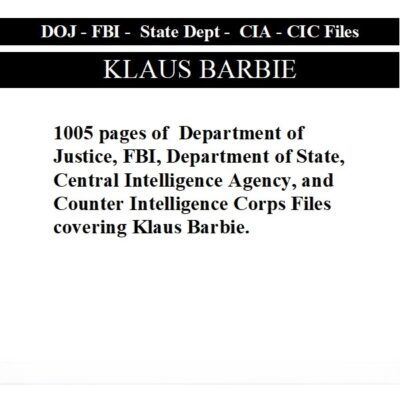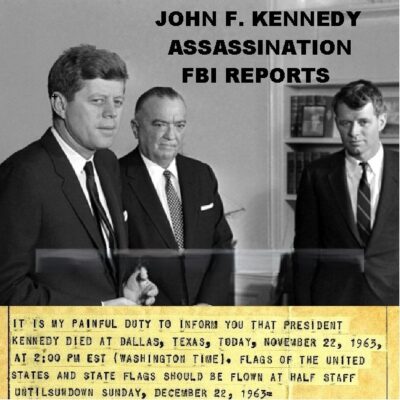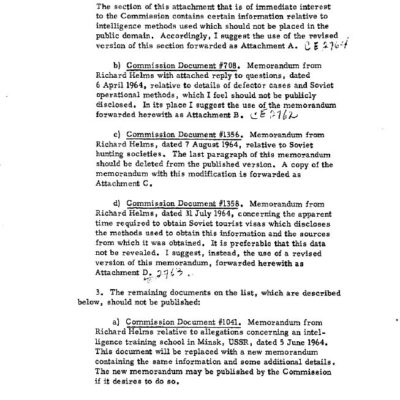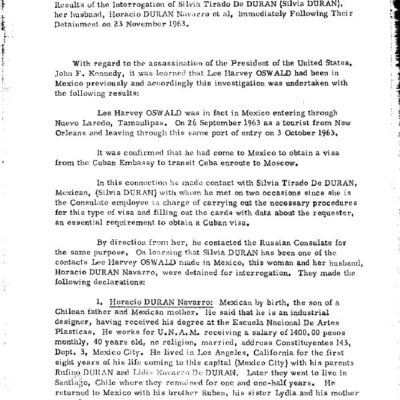
Description
Lincoln, War, and the Union: A Timeline and Cast
Pre-1858: Slavery and Political Tensions Build
- 1789 – 1880: Political cartoons depicting slavery, abolitionism, and their influence on American public life are created and collected, highlighting the long-standing debate.
1858: Lincoln-Douglas Debates and Illinois Senate Election
- 1858: Abraham Lincoln and Stephen Douglas engage in a series of seven debates concerning the Illinois U.S. Senate Election. These debates heavily focus on the political climate of the time, including the issue of slavery. Lincoln creates a personal scrapbook of these debates.
1860: Lincoln’s Election and Secession Begins
- January 1 – June 30, 1860 & October 1 – December 31, 1860: The New York Times extensively covers the upcoming Presidential election and the escalating secession crisis.
- November 6, 1860: Abraham Lincoln is elected the 16th President of the United States without the support of any Southern state. Campaign newspapers such as Lincoln and Liberty!!!, The Rail Splitter, The Campaign Dial, The Kentucky Campaign, and The Freeport Wide Awake are published specifically to support his election.
- December 20, 1860: South Carolina secedes from the Union, marking the beginning of the secession movement.
- November 24, 1860 – January 5, 1861: Frank Leslie’s Illustrated Newspaper covers this period, likely focusing on the election aftermath and growing tensions.
1861: Civil War Begins and Lincoln’s Inauguration
- January 5 – December 30, 1861: Harper’s Weekly publishes issues throughout the year, covering the escalating political situation and the outbreak of war. Thomas Nast begins drawing for Harper’s.
- January – August, October – December 1861: The New York Times reports on the first full-fledged belligerency of the American Civil War, with correspondents placed near battle lines.
- March 2, 1861 – June 20, 1863: Frank Leslie’s Illustrated Newspaper continues its coverage of the Civil War.
- March 4, 1861: Abraham Lincoln is inaugurated as the 16th President of the United States.
- March 4, 1861 – July 28, 1866: The Congressional Globe (later Congressional Record) documents debates, proceedings, presidential messages, and cabinet reports from the 37th, 38th, and 39th congressional sessions, covering the entire Civil War and its immediate aftermath.
- 1861 – 1865: Horatio Nelson Taft keeps a diary, providing a record of life in Washington D.C. during the war, including interactions with the Lincoln family.
- 1861 – 1866: David Homer Bates serves as a cipher operator and manager of the War Department’s telegraph office, chronicling Civil War events in his day-by-day journal and interacting with Lincoln and other key figures.
- 1861 – 1865: American foreign policy under Lincoln focuses on preventing foreign recognition of the Confederacy, minimizing foreign influence, enforcing the blockade, interfering with the Southern cotton trade, handling the Trent Affair, addressing the inability to maintain the Monroe Doctrine, and responding to Spain’s invasion of the Dominican Republic and France’s establishment of a puppet regime in Mexico.
1863: Key Battles and Ongoing War Efforts
- June 22 – July 16, 1863: Newspapers from across the US provide extensive coverage of the prelude, fighting, and aftermath of the Battle of Gettysburg, with much reporting from Harrisburg, PA.
- July 1 – 3, 1863: The Battle of Gettysburg is fought in and around Gettysburg, Pennsylvania. It is the deadliest battle of the Civil War, resulting in approximately 23,000 Union and 28,000 Confederate casualties.
- July 4, 1863: The Confederate Army retreats from Gettysburg, marking a Union victory that ends Robert E. Lee’s second and most ambitious invasion into Northern territory.
- July 1863: Georgeanna Muirson Woolsey Bacon writes her memoir “Three Weeks at Gettysburg.”
- August 29, 1863 – August 20, 1864: Volume 1 of the “United States Army and Navy Journal and Gazette of the Regular and Volunteer Forces” is published, covering this period.
- 1863: The book “Ye Book of Copperheads” (34 pages) containing civil war illustrations is published.
1864: Lincoln’s Re-election and Continued War
- January 2 – September 16, 1865: Frank Leslie’s Illustrated Newspaper continues its coverage.
- 1864: Campaign newspapers are again created and published to support Abraham Lincoln’s re-election as President.
- August 27, 1864 – August 19, 1865: Volume 2 of the “United States Army and Navy Journal and Gazette of the Regular and Volunteer Forces” is published, covering major Civil War events, court martials, obituaries, official dispatches, appointments, AWOL lists, foreign military matters, editorials, and advertisements, including reprints from Confederate publications.
1865: End of Civil War and Lincoln’s Assassination
- April 15, 1865: Abraham Lincoln is assassinated.
- 1865: Trials of the conspirators involved in Lincoln’s assassination begin, documented in 12 volumes of transcripts, trial accounts, and reporting.
- August 26, 1865 – July 21, 1866: Volume 3 of the “United States Army and Navy Journal and Gazette of the Regular and Volunteer Forces” is published, covering post-war issues such as the reduction of the Union Army, POW exchanges, construction of cemeteries and monuments, civil unrest, and pardons. It also continues to cover current military topics and global conflicts.
Post-1865: Historical Documentation and Legacy
- 1894: The first scholarly attempt to publish the complete writings of Abraham Lincoln, edited by John G. Nicolay and John Hay, is first published.
- 1905: The “Complete Works of Abraham Lincoln” (4,853 pages in 12 volumes, plus 80 pages of notes by John G. Nicolay) is published by Tandy-Thomas Company.
- 1907: David Homer Bates publishes his book Lincoln in the Telegraph Office.
- 1917: Excerpts from “Sketches from the Civil war in North America, 1861, ’62, ’63” containing secret Confederate illustrations are published.
- 1918: “American Caricatures Pertaining to the Civil War” (180 pages) is published.
- 1926: David Homer Bates publishes his second book, Lincoln Stories Told by Him in the Military Office in the War Department During the Civil War.
- 1994: “The Dismissal of General McClellan Why Did Lincoln Delay” is published.
- 1995: “Lincoln On Strategy” is published.
- 1995: “Abraham Lincoln and Jefferson Davis A Comparison of Civil War Commanders in Chief” is published.
- 1998: “President Lincoln The Reluctant Emancipator” is published.
- (Undated, created by Abraham Lincoln Sesquicentennial Commission): A “Day-by-Day Chronology (1809-1865)” of Lincoln’s life is created, spanning 1,166 pages in three volumes with a 136-page index.
Cast of Characters
- Abraham Lincoln (February 12, 1809 – April 15, 1865): The 16th President of the United States, serving from 1861 until his assassination in 1865. Key events during his presidency include the American Civil War, efforts to end American slavery, and the expansion of federal government power. He engaged in the famous Lincoln-Douglas Debates, oversaw foreign policy during the Civil War, and was the subject of numerous campaign newspapers.
- Stephen Douglas: A prominent political figure who debated Abraham Lincoln in 1858 for the Illinois U.S. Senate Election.
- David Homer Bates (1843-1926): A military telegrapher, author, and later vice president of Western Union Telegraph Company. He served as a cipher operator and manager of the War Department’s telegraph office from 1861 to 1866, documenting Civil War events in his diary and journals. He authored Lincoln in the Telegraph Office and Lincoln Stories Told by Him in the Military Office in the War Department During the Civil War.
- John G. Nicolay: Private secretary to U.S. President Abraham Lincoln and co-editor of the first scholarly attempt to publish Lincoln’s complete writings in 1894 and 1905.
- John Hay: Assistant to Abraham Lincoln and co-editor of the first scholarly attempt to publish Lincoln’s complete writings in 1894 and 1905.
- Richard Watson Gilder: Provided a general introduction to the “Complete Works of Abraham Lincoln.”
- Robert E. Lee: A Confederate general mentioned in David Homer Bates’s papers. He led the Confederate Army’s second and most ambitious invasion into Northern territory, which culminated in the Battle of Gettysburg.
- James Lawson Kemper: A Confederate general mentioned in David Homer Bates’s papers.
- Edmund Kirby Smith: A Confederate general mentioned in David Homer Bates’s papers.
- Richard Stoddert Ewell: A Confederate general mentioned in David Homer Bates’s papers.
- Jefferson C. Davis: The President of the Confederate States of America, mentioned in David Homer Bates’s papers.
- Horatio Nelson Taft (1806-1888): A U.S. Patent Office examiner, Washington D.C. resident, and a cousin of future President William Howard Taft. He was a family friend of the Lincolns and kept a detailed diary during the Civil War era (1861-1865), documenting life in wartime Washington.
- Georgeanna Muirson Woolsey Bacon: Author of the memoir “Three Weeks at Gettysburg,” written in July 1863.
- Thomas Perritt: A soldier in Company G of the 26th North Carolina Infantry (CSA), who wrote a memoir.
- Rodney O. Davis: A historian at the Lincoln Studies Center at Knox College, who led the project creating scholarly annotations for Lincoln’s correspondences and papers related to the Battle of Gettysburg.
- Douglas L. Wilson: A historian at the Lincoln Studies Center at Knox College, who led the project creating scholarly annotations for Lincoln’s correspondences and papers related to the Battle of Gettysburg.
- Thomas Nast: The “father of the modern American political cartoon,” who drew for Harper’s Weekly from 1859-1860 and from 1862 to 1886.
- General McClellan: A Union general whose dismissal by Lincoln is the subject of one of the included monographs.
Abraham Lincoln Documents Archive USB Card
66,767 pages of Abraham Lincoln related documents in 20 collections.
Abraham Lincoln (February 12, 1809 – April 15, 1865) served as the 16th president of the United States from his inuguation in 1861 until his assassination in 1865. Key events in Lincoln’s life involved the American Civil War, American slavery, and the power of the federal government.
Just plug the USB Pen Card into your laptop, desktop, or tablet to access a significant compendium of Abraham Lincoln related documents.
The USB Pen card works with any device with a USB 2.0, 3.0 or 3.1 interface.
The 20 titles include:
Abraham Lincoln – Assassination – Trials of the Conspirators Proceedings Transcripts
4,869 pages in 12 volumes of overlapping transcripts, trial accounts and reporting of the trials of the Lincoln Assassination conspirators.
Abraham Lincoln – Campaign Newspapers 1860 – 1864
518 pages of Abraham Lincoln campaign newspapers from the elections of 1860 and 1864.
Many newspapers at the time took specific and clearly partisan positions, which were often reflected in the names of the newspaper. The newspapers in this collection go beyond just a partisan political bias. These newspapers were created and existed only to get Abraham Lincoln elected or re-elected President, then ceased publication after the election.
The newspapers include: Lincoln and Liberty!!!, The Rail Splitter, The Campaign Dial, The Kentucky Campaign and The Freeport Wide Awake.
Abraham Lincoln – Civil War Era United States Foreign Policy and Diplomatic Papers Transcriptions and Histories
16,553 pages of transcripts of foreign policy and diplomatic papers, transcriptions and histories. Text transcriptions of diplomatic papers compiled and published by the Office of the Historian, Bureau of Public Affairs United States Department of State, from 1861 to 1865.
The materials cover a broad range of diplomatic activity world-wide. The American Civil War heavily dominated American foreign policy during this period. The objectives of President Lincoln’s foreign policy focused on preventing foreign nations from recognizing the Confederacy, minimalizing foreign influence on the war, enforcing the blockade of the Confederacy, interfering with the Southern cotton trade, the Trent Affair, handling the inability to maintain the Monroe Doctrine, dealing with the invasion of the Dominican Republic by Spain and France’s establishment of a puppet regime in Mexico.
Abraham Lincoln – Complete Works of Abraham Lincoln
4,853 pages in 12 volumes, plus 80 pages of notes by John G. Nicolay regarding the compilation of the works. Published by the Tandy-Thomas Company in 1905. First published in 1894, this work was the first scholarly attempt to publish the complete writings of Abraham Lincoln.
Edited by John G. Nicolay, who served as private secretary to U.S. President Abraham Lincoln, and John Hay, assistant to Abraham Lincoln, with a general introduction by Richard Watson Gilder, and special articles by other eminent persons.
Abraham Lincoln – Day-by-Day Chronology (1809-1865)
1,166 pages in three volumes created by the Abraham Lincoln Sesquicentennial Commission, inclusive is a 136-page index including both name and subject entries for all three volumes.
Abraham Lincoln – Stephen Douglas Debate
776 pages of historical material dealing with the Lincoln – Douglas Debates and the Illinois U.S. Senate Election of 1858. Material includes Abraham Lincoln’s personal scrapbook of the Lincoln – Douglas Debates. Abraham Lincoln correspondences and papers dealing with political climate of the time, Stephen Douglas, and the election of 1858. Transcripts of the seven Lincoln-Douglas debates. Political cartoons featuring Abraham Lincoln and Stephen Douglas.
Abraham Lincoln’s Telegrapher David Homer Bates Papers, Diary, Journal and Books
1,880 pages of the papers of David Homer Bates and documents including correspondence, diary and journal entries, historical document facsimiles, photographs, newspaper clippings, printed matter, and drafts and annotated proof sheets, from holdings in the Alfred Whital Stern Collection of Lincolniana in the Library of Congress.
David Homer Bates (1843-1926), was a military telegrapher, author, and vice president of Western Union Telegraph Company. From 1861 to 1866 Bates was cipher operator and manager or the War Department’s telegraph office. He wrote two books about his experiences in the telegraph office, Lincoln in the Telegraph Office (1907) and Lincoln Stories Told by Him in the Military Office in the War Department During the Civil War (1926).
This collection includes material handwritten by President Abraham Lincoln. A key document is a day by day journal of Civil War events. Also of note are letters written by Civil War figures such as Confederate generals Robert E. Lee, James Lawson Kemper, Edmund Kirby Smith, Richard Stoddert Ewell, and Confederate president Jefferson C. Davis.
Books – Monographs – Histories
A collection of 4 important works on Abraham Lincoln: The Dismissal of General McClellan Why Did Lincoln Delay (1994), Lincoln On Strategy (1995), Abraham Lincoln and Jefferson Davis A Comparison of Civil War Commanders in Chief (1995) and President Lincoln The Reluctant Emancipator (1998).
Civil War – Army Navy Journal & Gazette Volume 1
764 pages of the first volume of “United States Army and Navy Journal and Gazette of the Regular and Volunteer Forces.”
Sometimes called “Army and Navy Journal” or “Armed Forces Journal,” these 48 issues date from August 29, 1863 to August 20, 1864. The Army and Navy Journal was the nation’s leading military journal of the time. This collection includes issues number 1 through 22, 24 through 33, and 37 through 52.
Civil War – Army Navy Journal & Gazette Volume 2
832 pages of the “United States Army and Navy Journal and Gazette of the Regular and Volunteer Forces,” Volume 2. These 52 issues date from August 27, 1864, to August 19, 1865. The Army and Navy Journal was the nation’s leading military journal of the time. This volume covers all the major Civil War events of the period covered in this volume. In addition to major Civil War events, the Army Navy Journal covered stories of court martials, obituaries, official dispatches from the War Department, appointments, list of AWOLs, foreign military matters, editorials and advertisements. The Journal included reprints of articles from Confederate publications. Southern newspapers including the Greensboro Journal, Richmond Dispatch, Richmond Enquirer, Richmond Sentinel and Atlanta Constitution.
Civil War – Army Navy Journal & Gazette Volume 3
733 pages of the third volume of “United States Army and Navy Journal and Gazette of the Regular and Volunteer Forces.” This set contains 733 pages composed of 42 issues (668 pages). The 42 issues include issue Number 1 August 26, 1865 to Number 21 January 13, 1866, Number 23 January 27, 1866 to Number 27 February 24, 1866, Number 30 March 17, 1866 to Number 41 June 2, 1866, and Number 45 June 30, 1866 to Number 48 July 21, 1866. Also included are 65 pages from incomplete issues dating from January 22 1866, June 9 to June 23 1866, and July 28 to August 18, 1866.
In the first months after the Civil War, the Army Navy Journal covered post war issues and looked back at some of the episodes of the war. Subjects covered included the reduction and transformation of the Union Army, The last POW exchanges, the construction of cemeteries and monuments, civil unrest, and pardons.
In addition to Civil War subjects the Army Navy Journal covered current military topics and news of conflicts from round the world. It chronicled current military information with stories about court martials, listings of obituaries, official dispatches from the War Department, appointments, list of AWOLs, foreign military matters, editorials and advertisements. The Journal included reprints of articles from Southern newspapers including the Greensboro Journal, Richmond Dispatch, Richmond Enquirer, Richmond Sentinel and Atlanta Constitution.
Civil War – Battle of Gettysburg Correspondences and Writings by Lincoln, Union & Confederate Commanders
871 pages of letters written to and from President Abraham Lincoln, Union & Confederate commanders and soldiers, and memoirs by others related to the Battle of Gettysburg and its aftermath.
This collection contains:
President Abraham Lincoln Correspondences and Papers
247 pages of color scans and transcriptions of correspondences to and from President Abraham Lincoln related to the Battle of Gettysburg and its aftermath. The transcriptions include scholarly annotations and references connected to the documents. These notes help in identifying the people and situations involved and to better understand the content and historical context in the documents. The annotations were created by historians at the Lincoln Studies Center, located at Knox College in Galesburg, Illinois. Lincoln scholars Rodney O. Davis and Douglas L. Wilson led the project which created the annotations.
Also Contains:
Correspondences by Union and Confederate Commanders and Soldiers
General Meade Correspondence, Union, and Confederate Reports
Thomas Perritt, 26th North Carolina infantry, Company G. CSA, Memoir
Three Weeks at Gettysburg – Memoir by Georgeanna Muirson Woolsey Bacon – July 1863
Civil War – Battle of Gettysburg Newspaper Coverage in 1863
884 full sheet newspaper pages, from the North, South, East and West with coverage of the prelude, fighting and aftermath of the Battle of Gettysburg. The papers date from June 22, 1863, to July 16, 1863. In and around the Pennsylvania town of Gettysburg, the Battle of Gettysburg was fought from July 1st to 3rd. On July 4th the Confederate Army retreated.
The Battle of Gettysburg is credited as deadliest battle of the Civil War. In three days approximately 23,000 Union and 28,000 Confederate soldiers were killed, wounded, or captured. The Union victory ended General Robert E. Lee’s second and most ambitious invasion into Northern territory.
Much of the newspaper reporting was done from Harrisburg, PA, because that is where many newspaper reporters believed the Confederate army was headed.
The newspapers began covering the movements of Confederate forces northward as early as June 22. Much speculation is given to Confederate goals and tactics.
Civil War – Frank Leslie’s Illustrated Newspaper 1860-1865
3,700 pages of Frank Leslie’s Illustrated Newspaper covering the Civil War years of 1860 to 1865.
Every issue published from November 24, 1860 through January 5, 1861, March 2, 1861 through June 20, 1863, July 4, 1863 through September 19, 1863 and January 2, 1864 through September 16, 1865
Civil War – Harper’s Weekly 1861 – 1865
4,176 pages, every issue of Harper’s Weekly from January 5, 1861 to December 30, 1865.
Published in New York City by Harper & Brothers from 1857 until 1916, Harper’s Weekly, “A Journal of Civilization,” was the leading weekly newspaper in the United States. It covered politics, domestic and foreign news, and included fiction, essays, humor and illustrations. The weekly is famous as the home base for the father of the modern American political carton Thomas Nast, who drew for Harper’s 1859-1860, and from 1862 to 1886. By 1860, the Weekly’s circulation had reached 100,000.
Civil War – Horatio Nelson Taft Diaries (1861-1865)
The Civil War era diary of Horatio Nelson Taft (1806-1888), a U.S. Patent Office examiner, Washington DC resident, a cousin of future President William Howard Taft, and family friends with the Lincolns. The diaries of Horatio Taft provide a vivid record of life in Washington during the most traumatic period of our history as a nation.
Civil War – New York Times 1860
1,989 pages of the New York Times dating from January 1, 1860, to June 30, 1860, and October 1, 1860, to December 31, 1860, plus a subject index for the New York Times 1860.
The two most important events to happen in 1860 in relation to the upcoming Civil War was the election of Abraham Lincoln as the 16th President of the United States on November 6, 1860, without the support of any Southern state and the secession of South Carolina from the Union on December 20, 1860. The entire year finds much coverage of the Presidential election and the increasing fever of the secession crisis.
Civil War – New York Times 1861
2,616 pages of the New York Times dating from January to August and October to December 1861, plus a subject index for all the 1861 issues of the New York Times.
1861 experienced the first full-fledged belligerency of the American Civil War (1861-1865). The New York Times was one of only a handful of newspapers in the United States to place correspondents near the lines of battle during the Civil War. None of the battles fought during the Civil War were fought inside the State of New York. New York was the most populous state in the Union during the Civil War. Approximately 400,000 citizens of New York State served in Union forces and 54,000 died.
Civil War – United States Congressional Record – Congressional Globe 1861-1866
16,550 pages of the Congressional Globe, which later became the Congressional Record, covering debates and proceedings of the 37th, 38th, and 39th congressional sessions of the Senate and the House of Representatives, messages of the President to Congress and reports of cabinet officers, dating from March 4, 1861 to July 28, 1866.
Slavery Political Cartoons 1789 – 1880
174 images of political cartoons held by the Library of Congress, dating from 1789 to 1880, dealing with slavery and abolitionism, and its relationship and its influence on American public life
In addition to the 174 illustrations are three digitalized volumes, containing and covering civil war illustrations: Ye Book of Copperheads – 34 Pages (1863), American Caricatures Pertaining to the Civil War – 180 Pages (1918), and except from “Sketches from the Civil war in North America, 1861, ’62, ’63 (1917), containing secret confederate illustrations.
Related products
-

Klaus Barbie: Department of Justice – FBI – Counter Intelligence Corps Files
$19.50 Add to Cart -

John F. Kennedy Assassination FBI Reports
$19.50 Add to Cart -


John F. Kennedy Assassination: CIA Reports
$19.50 Add to Cart -

President Ronald Reagan Assassination Attempt John Hinckley Jr. FBI Files
$19.50 Add to Cart